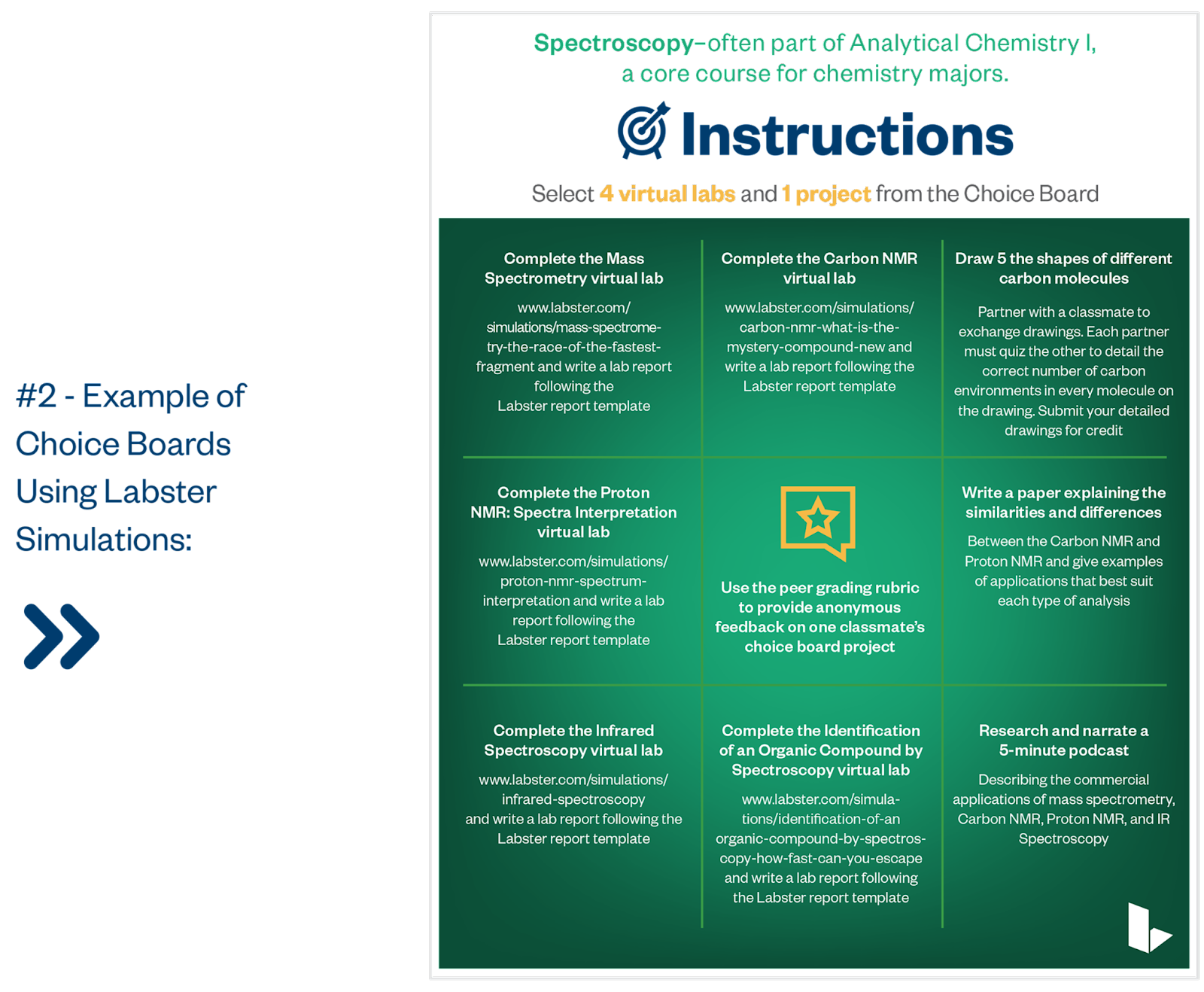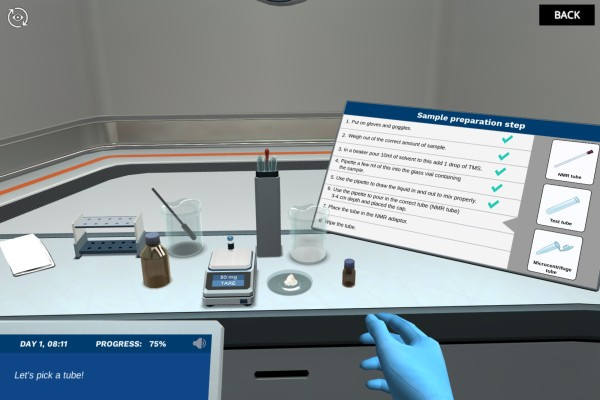.jpg)
Whether teaching a general education chemistry course or a higher-level chemistry course, an inclusive lab ensures that all students, regardless of their abilities or backgrounds, have opportunities to participate.
This includes experiences of students with disabilities, at-risk students, and even disengaged students. How do we make the chemistry lab accessible to them all?
Here are some ways:
We’ll also introduce you to Labster’s virtual labs, which can help make access to science more equitable.
Students are more disengaged than ever, especially tech-savvy, constantly plugged-in Gen Zs. Part of accessibility is ensuring that each student is engaged in their learning. How can you do this? Using a variety of tools is one way. Assigning options on a choice board is a great way to diversify the experience while maintaining specific options that align with your curriculum.
According to research, although planning for differentiation in coursework is time-intensive, it has many benefits to enhance student learning in the classroom.
Here’s a sample choice board from Labster:

According to a comprehensive guide written by the Chemists with Disabilities subcommittee of the American Chemical Society, although students with disabilities or those requiring special accommodations should register with the appropriate office to implement accommodations, instructors must meet students where they are. An accommodation may include allowing additional time for setup or completion of the lab.
According to the U.S. Department of Education, providing individualized accommodations can significantly increase the performance and participation of students with disabilities.
One benefit to Labster is that students can take their time with the virtual lab. They can go through it at their own pace and can redo it if they feel they need to learn more.
A one-size-fits-all approach is becoming less effective in today's diverse classroom setting. Students come with their own set of strengths, weaknesses, backgrounds, and learning preferences. Personalization has been shown to increase student achievement, especially for ESL learners, students with disabilities, and those who are achieving below grade level.
Labster recently implemented a Quiz Editor tool that allows instructors to create their own questions for each virtual lab, tailoring them to their curriculum. Instructors also have access to a dashboard that shows how students did in the virtual labs, enabling them to adapt their teaching to gaps that may be common among students or identify a struggling student before it’s too late.
Accessible design for a chemistry lab prioritizes accessibility and inclusivity, ensuring that all individuals, regardless of physical abilities, can safely and effectively participate in lab activities. Key elements include adjustable-height workstations, tactile and auditory tools for visually or hearing-impaired students, and clear, wide pathways for ease of movement.
When students see the relevance of their learning, it excites them about the process. To make chemistry learning more inclusive and accessible, instructors can incorporate real-world examples from diverse cultures and backgrounds to highlight the universal importance of chemistry. Students can struggle with grasping and caring about it when it’s too abstract.
Labster offers a variety of chemistry simulations, each with a contextualized storyline. One example is our Carbon NMR simulation. Students will help “Yummy Food Inc.” survive the shutdown of their food factory! They’ll learn about the principles of the analytical technique carbon-13 NMR and interpret the spectrum of the mysterious unlabelled compound they have used in their food and drink.

Using technological tools in the classroom and lab can greatly enhance the learning experience, but it's vital that these tools are accessible to all. User-friendly and adaptable technology aids the learning process and ensures inclusivity for students with varying abilities.
In the last couple of years, Labster worked very hard on introducing accessibility features following international guidelines. We've come a long way and with our continuous improvements in accessibility with each platform release, we are proud to enable students with various impairments to experience science in a digital and accessible environment.
Hear from our in-house accessibility expert, Monika Starnawska, “Our efforts are recognized by our customers. They appreciate our unique approach to accessibility that adapts web-based requirements into simulation space. We are equipping our students with built-in screen readers, voiceover systems, colorblind-friendly assets, keyboard navigation, and many more features that enable equitable access to all students, as well as those who might need a bit of help to pursue their scientific interests.”
Collaborative learning promotes accessibility by allowing students to work together, capitalizing on individual strengths and helping students learn from one another. Revisit the choice boards to see the different ways students can work together!
Labster’s platform provides an environment conducive to group-based learning. Students can communicate their observations and findings with peers, simulating the collaborative nature of real-world scientific research.
Frequent assessment ensures that students grasp the concepts and provides opportunities for educators to address any accessibility issues that may arise.
With Labster’s in-depth analytics, instructors can receive real-time feedback on student performance, allowing for timely intervention. This proactive approach can prevent minor misunderstandings from becoming significant hurdles.
Accessibility requirements and tools are ever-evolving. It's crucial to stay informed about the latest best practices, tools, and technologies that enhance accessibility. Regularly solicit student feedback about their experiences and needs in the lab and be prepared to adapt accordingly.
The goal of any educational setting is not just to disseminate information but to ignite a passion for learning. In the context of chemistry labs and classrooms, this translates to an inclusive, engaging, and adaptive environment.
With the tools and strategies discussed, from personalization to using technology like Labster, educators can ensure that every student feels valued and empowered in their educational journey.

Labster helps universities and high schools enhance student success in STEM.
Request DemoRequest a demo to discover how Labster helps high schools and universities enhance student success.
Request Demo